Everything you need to know about Aeroplan’s new award chart
Signing up for credit cards through partner links earns us a commission. Terms apply to the offers listed on this page. Here’s our full advertising policy: How we make money.
Update: One or more card offers in this post are no longer available. Check our Hot Deals for the latest offers.
Air Canada’s Aeroplan has been one of the better airline loyalty programs in existence thanks to the many sweet spots in its award charts and array of partner airlines. But come November 8, 2020, Aeroplan is getting a massive overhaul. If you’re not yet invested in Air Canada Aeroplan, these changes may woo you towards the program or even push you away.
Don’t shy away from Air Canada’s program just because you live in the U.S. Aeroplan miles can be used on dozens of partners, notably United, Lufthansa, ANA, Etihad and more. Plus, Aeroplan miles are easy to earn through welcome offers and by regularly swiping American Express credit cards, Capital One cards, or Marriott cards such as:
- The Platinum Card® from American Express
- American Express® Green Card
- American Express® Gold Card
- Marriott Bonvoy Boundless Credit Card
The information for the Amex Green Card has been collected independently by Million Mile Secrets. The card details on this page have not been reviewed or provided by the card issuer.
I’ll explain what’s different about the Air Canada award chart, and highlight some of the best and worst changes.

How does the new Air Canada Aeroplan award chart work?
There are a few different elements to this new award chart you’ll have to juggle to determine the miles necessary for your desired flight. It looks more difficult than it is.
Step 1 is to determine the “zones” in which your origin and destination reside. Aeroplan categorizes the world into four zones, as you can see in the below map.
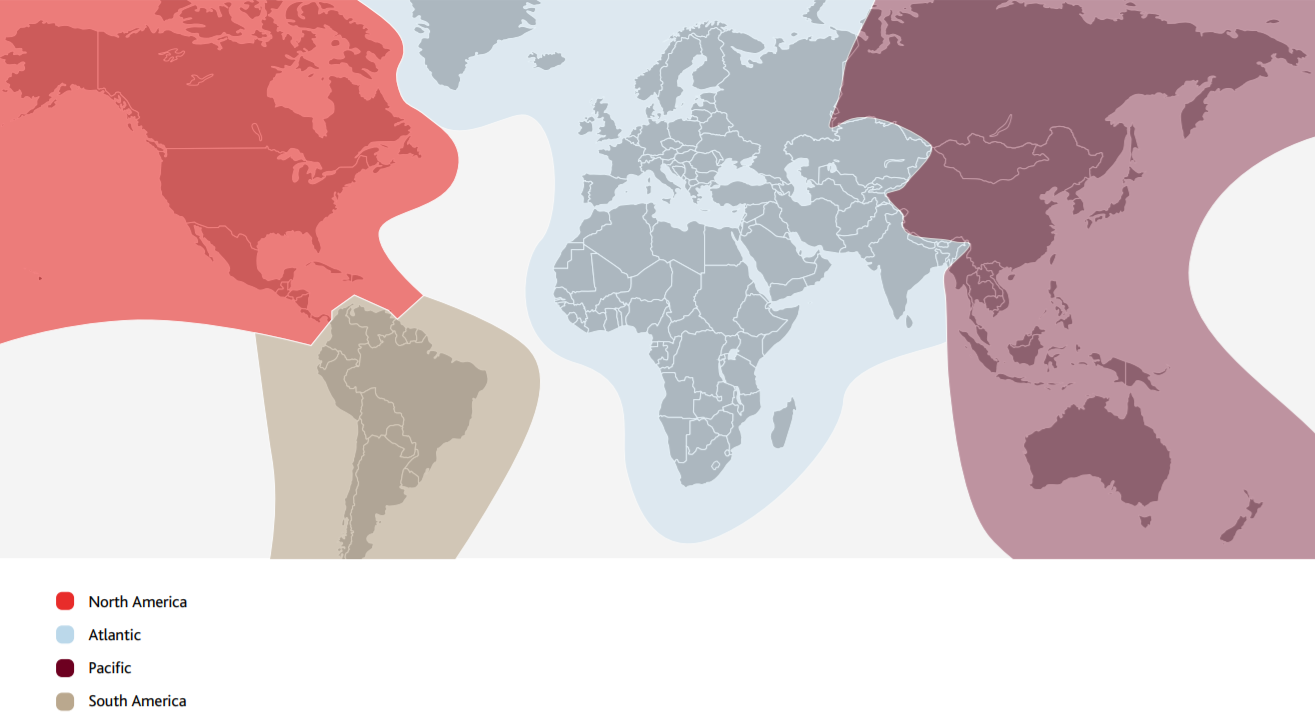
More than likely, you’re flying from the “North America” zone. If you desire to visit Switzerland, your destination will be in the “Atlantic” zone.
Step 2 is to consult the proper award chart (you can find all the new award charts here). Aeroplan publishes four award charts for those flying from North America. For the above trip, you’ll look at the “Between North America and Atlantic zones” chart. Let’s do that now. Prices are for one-way travel.
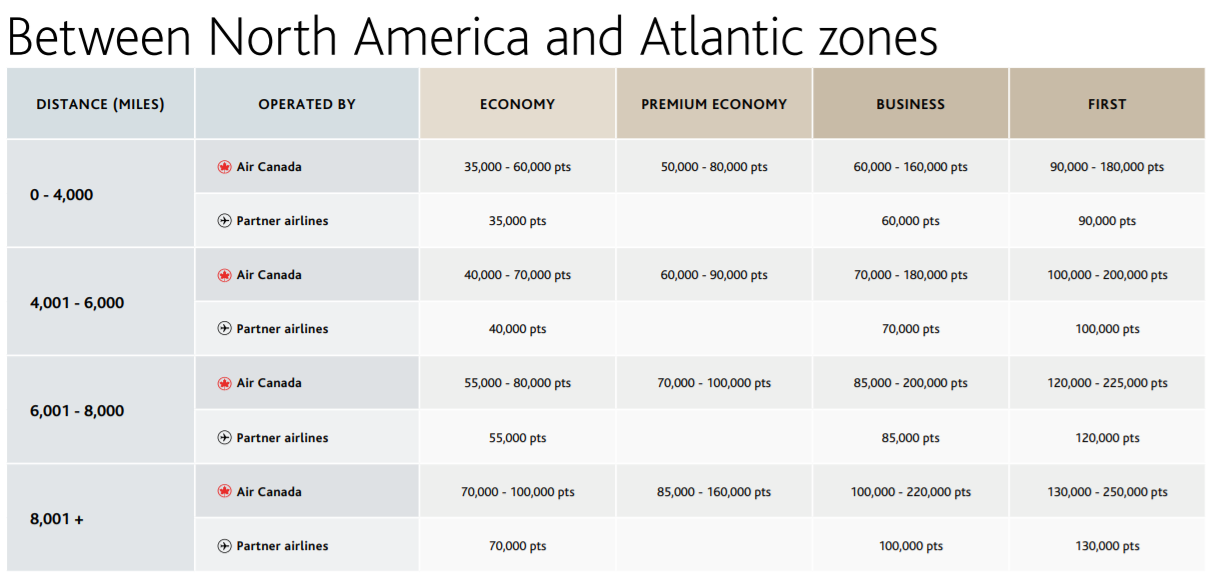
As you can see, you may pay different prices depending on which airline you fly. Flying Air Canada can be significantly more expensive than flying on their Star Alliance partners, such as United, Turkish Airlines, SWISS, etc. Air Canada’s dynamic pricing means you could pay up to 120,000 MORE points than flying partner airlines.
You’ll be charged based on the distance flown between your origin and destination airports. For example, if you book a business class flight from Los Angeles to Zurich via Istanbul on Turkish Airlines, you’ll have flown 7,935 miles. According to the award chart, you’ll pay 85,000 points.
However, if you book a business class flight from New York to Zurich via Lisbon on TAP Portugal, you’ll have traveled 4,439 miles. According to the award chart, you’ll pay 70,000 points.
Note: You can figure your flight distance by navigating to the Great Circle Mapper and entering your route.
Here’s what you need to know about the above charts, per Aeroplan:

New Air Canada award chart: The good news
No fuel surcharges!
This was by far the most bloody annoying thing about the Aeroplan program. You may find a great award price, but you’d end up paying $600 to $1,000 in fuel surcharges! This is no longer the case — Air Canada will no longer impose exorbitant fees for their flights. These exorbitant surcharges were commonly found when booking an award flight on airlines like Austrian, Lufthansa, and Air Canada.
New stopover rules
Some may have filed this under bad news (stopovers used to be free on round-trip flights), but for most of us, it’s a boon. You can now build a stopover into each direction of your journey by ponying up 5,000 miles per stopover. In other words, you can buy two stopovers on a round-trip flight for 10,000 extra miles. Stopovers allow you to spend as much time in a city as you like until transiting to your final destination. An example includes flying from New York to London, spending a week in London, and then continuing on to your final destination of Tel Aviv — you wouldn’t have to pay extra for the London to Tel Aviv leg.
There are really only two rules when it comes to stopovers:
- You cannot build a stopover within North America
- You cannot backtrack
The second rule is a bit ambiguous at the moment, but worst-case scenario it means you cannot touch a “zone” more than once each way.
Apart from that, you can do ANYTHING. The site isn’t live with these changes yet (that’ll arrive November 8, 2020), but with a bit of speculation, you should be able to do something like the following.
Flights from the U.S. to South America cost — at most — 100,000 miles on partner airlines. Here’s the award chart.

The highest tier of the South America award chart is “4,501+,” meaning any distance you fly beyond 4,500 miles will still cost 100,000 miles.
Because of this, you can book a first class flight from Chicago to Bogota, Colombia, with a stopover in Auckland, New Zealand, for 105,000 miles. With this route, you would fly first class from Chicago to New Zealand to Bogota for a total of 105,000 miles. Not sure how the routes would look exactly, but it could be something like this (remember, no backtracking is allowed):
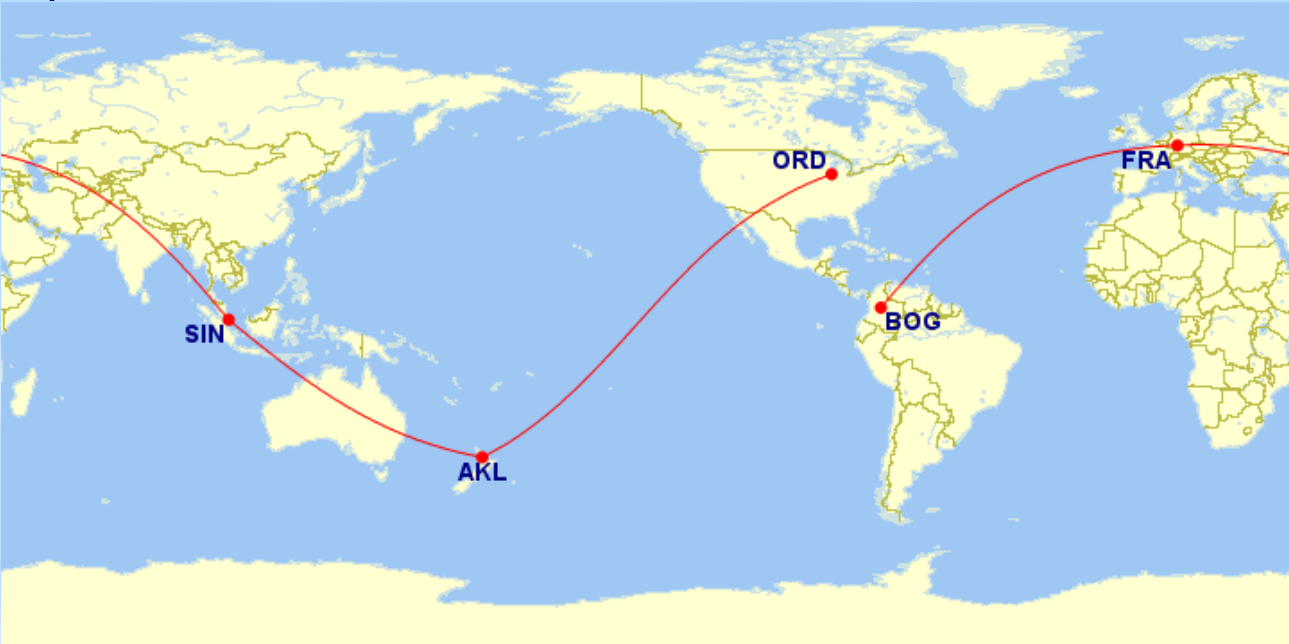
If that’s possible, you’re burning just 105,000 miles for a first class flight around the world, not to mention you’ll be paying zero fuel surcharges.
That’s a great deal, but also consider this: A first class flight from Chicago to New Zealand is an 8,184 mile flight, which would cost 130,000 points in first class. That means booking a flight to Bogota with a stopover in New Zealand is 25,000 miles cheaper than just booking U.S. to New Zealand. Here’s the award chart.

If you’re only interested in going to New Zealand, you could “throw away” the rest of the itinerary if you wanted, and just book an alternate flight home.
Here are a few examples of itineraries with stopovers that should work under the new program:
- Houston to Paris to Cape Town in business class with a stopover in Paris for 105,000 points
- New York to Sydney to London in business class with a stopover in Sydney for 110,000 points
- Los Angeles to Frankfurt to Tokyo in first class with a stopover in Frankfurt for 145,000 points
The point of all this is to say that the new stopover rules will allow for some really creative itineraries that are bookable for a very reasonable amount of miles.
Family friendly policies
Air Canada is providing an unbelievably sweet deal for families traveling with lap infants. You’ll pay just CAD 25 (or 2,500 miles) each way for a lap infant, no matter if you’re in first class, business class, or coach. This low price applies even if you’re flying on any Air Canada partners, too. Simply call 800-361-5373 to add your infant.
Additionally, you can combine points with up to eight family members to achieve award flights faster than ever. The only stipulation is that each family member must have an Aeroplan account that’s at least three months old. And to join a different pool, you’ll have to leave your current family pool and wait six months.
New Air Canada award chart: The bad news
Small partner airline fee
You’ll now pay CAD 39 (about $30) when booking partner flights. However, I’ll gladly pay this in exchange for the hassle of evading (and still sometimes being forced to pay) fuel surcharges.
Award prices increasing
The number of miles you’ll need for flights are reported to have increased by about 13% on average. Probably the biggest bummer of the new change, but remember that you’re not paying hard cash for fuel surcharges anymore. You might even think of this price hike as paying moderate fuel surcharges in the form of miles instead of money.
Distance-based award charts are a double-edged sword. There are definitely anti-sweet spots with this new structure from Air Canada. Depending on the locations of your home airport, you may well be charged tens of thousands of miles more than other U.S. residents for the same destination. For example, with this new award chart, you can fly one-way from New York (JFK) to Milan, Italy, for as little as:
- 35,000 miles in coach
- 60,000 miles in business class
- 90,000 miles in first class
However, if you’re living in Los Angeles, a flight to Milan will cost:
- 55,000 miles in coach
- 85,000 miles in business class
- 120,000 miles in first class
Wow! You’ll spend up to 30,000 more miles each way depending on your origin. It’s also worth noting that 55,000 miles for a trip to Europe is nearly double the price most other programs will charge to get to Europe.
The current award chart allows you to book business class flights to Europe from anywhere in the U.S from 55,000 miles on partner airlines like SWISS.
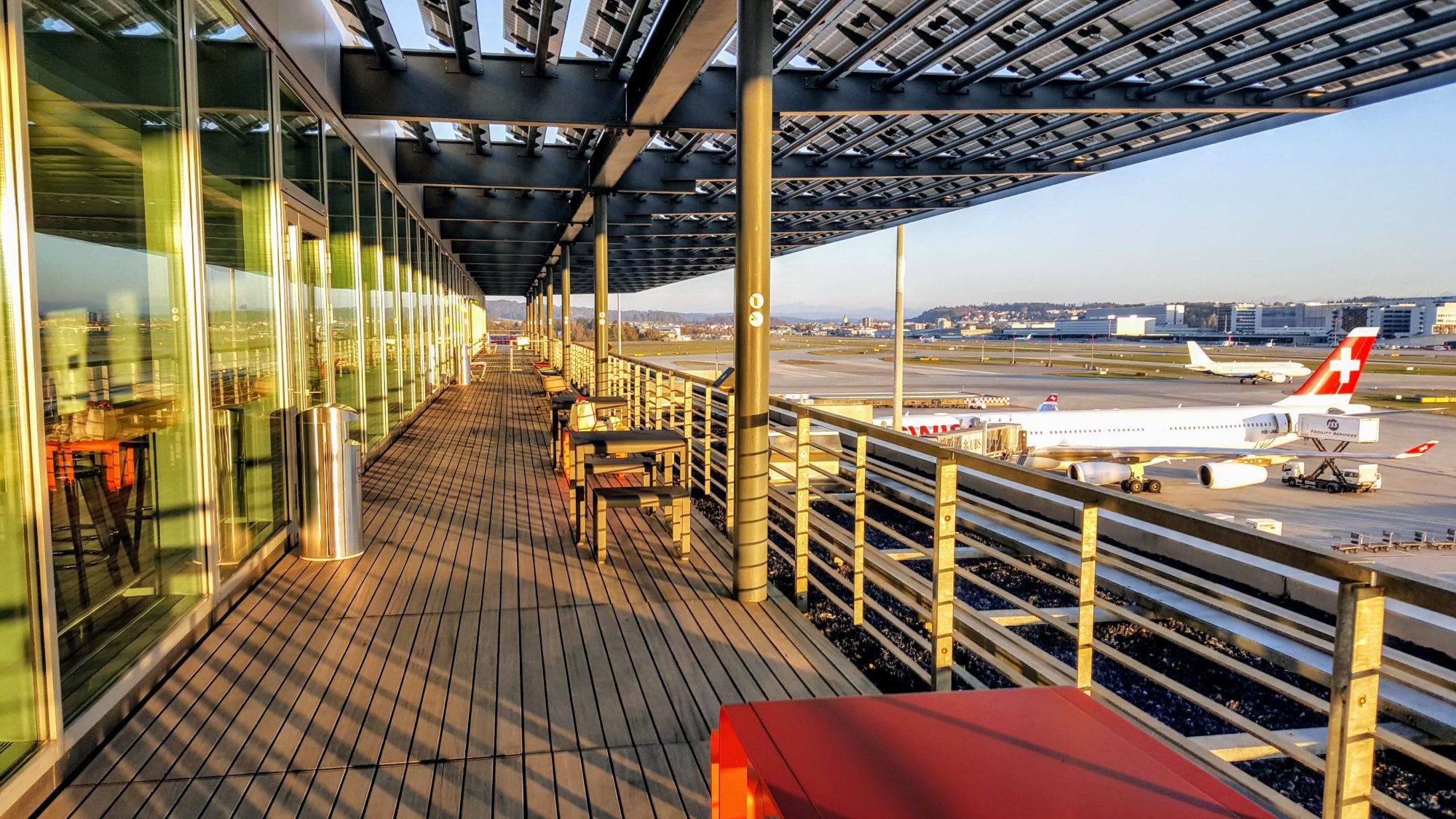
Other example sweet spots include:
- Los Angeles to Japan – 105,000 miles each way in first class (5,000 miles cheaper than the upcoming price)
- New York to Johannesburg – 75,000 miles each way in business class (10,000 miles cheaper than the upcoming price)
- Los Angeles to India – 75,000 miles (25,000 miles cheaper than the upcoming price)
Again, this new program launches November 8, 2020, so if you want to lock-in rates at the current price, book your flights before then.
Bottom line
For some, Air Canada Aeroplan is a more attractive investment than it’s ever been, namely because of the lack of fuel surcharges and the new stopover rules. You can accrue Aeroplan miles through the best American Express cards. And here’s another exciting detail to look forward to: Air Canada will soon release a new credit card in the U.S.!
We’ll keep you posted on this new program if we find something else. You can subscribe to our newsletter to make sure you don’t miss it (or other posts like this).
Editorial Note: We're the Million Mile Secrets team. And we're proud of our content, opinions and analysis, and of our reader's comments. These haven’t been reviewed, approved or endorsed by any of the airlines, hotels, or credit card issuers which we often write about. And that’s just how we like it! :)

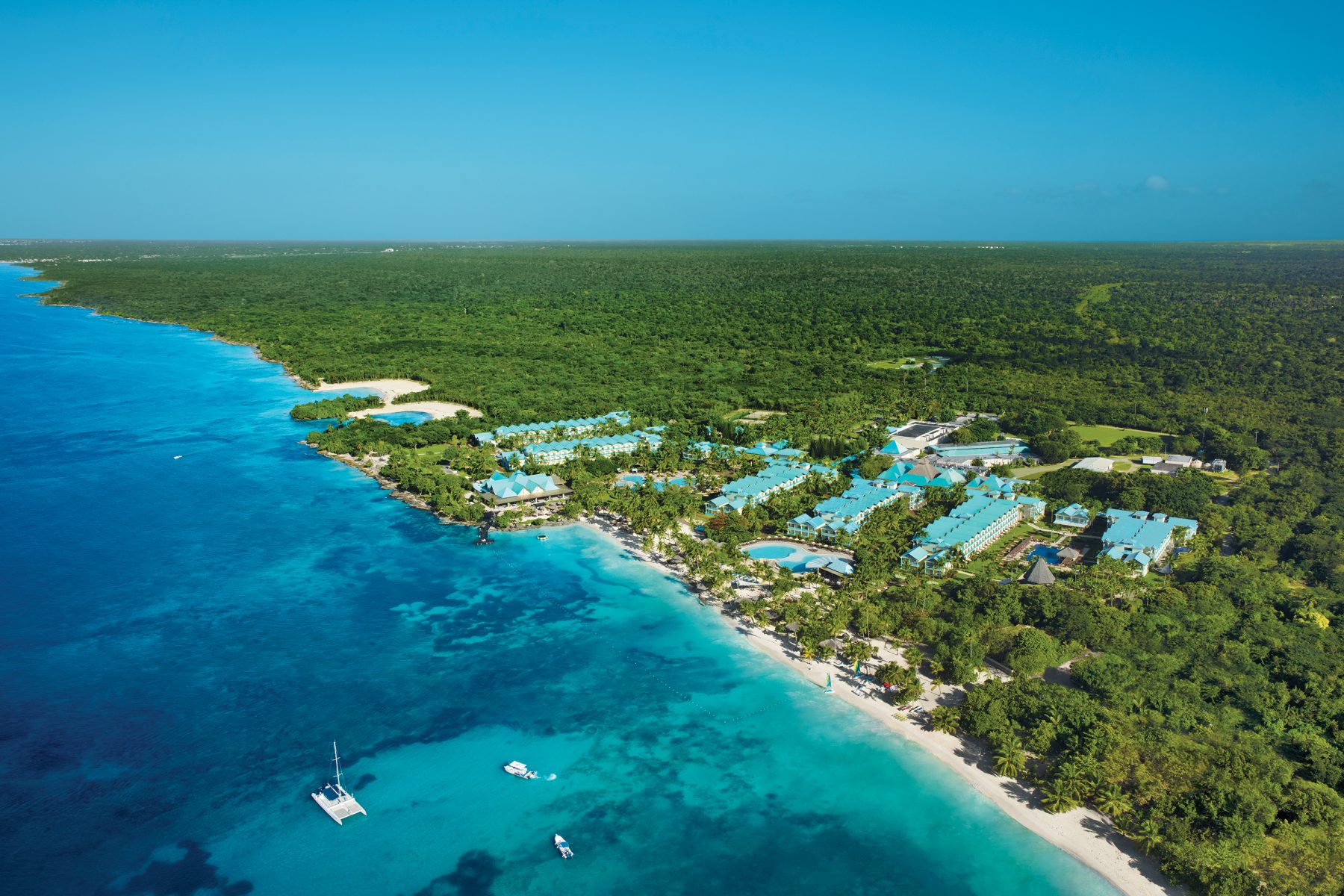




Join the Discussion!